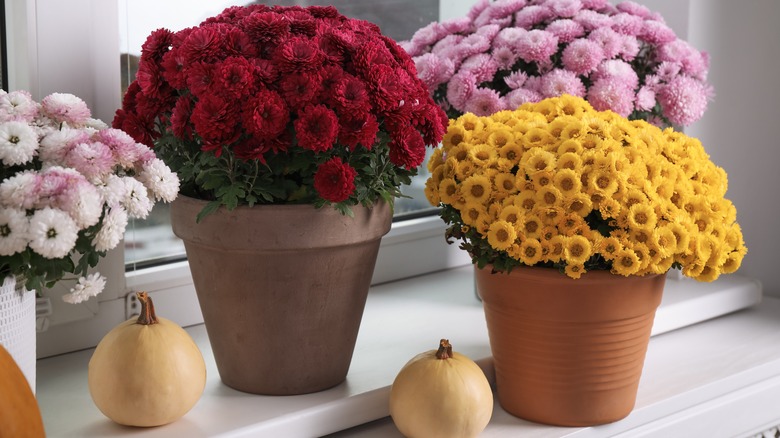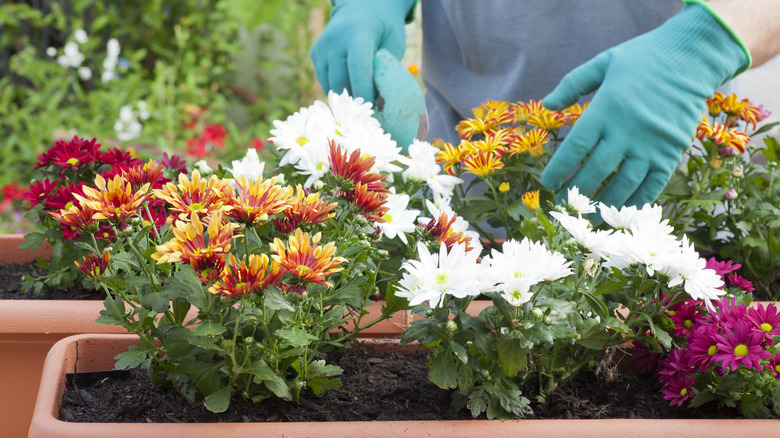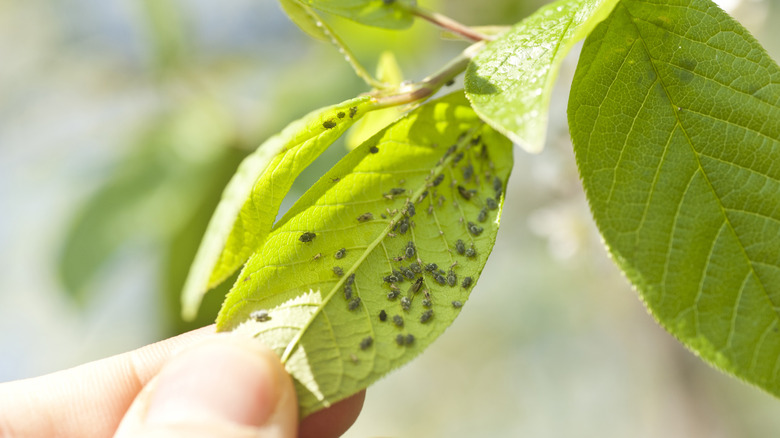Why A Chrysanthemum Might Not Be The Ideal House Plant
If you want to bring in the vibrant beauty of chrysanthemums, commonly known as "mums," into your home, it's important to pause and consider some crucial aspects. At first glance, these perennials, with their stunning array of colors and lush foliage, seem like the perfect houseplants. Yet, the reality is a bit more complex. While visually appealing, these plants are not ideally suited for indoor living, primarily due to their high, medium-light requirements. This is where the challenge lies, as this environment is hard to replicate indoors. Without adequate light, these plants struggle to grow and bloom. It's a common disappointment for many indoor garden enthusiasts, as the lack of sufficient natural light in most homes leads to underwhelming floral displays.
Moreover, there's the aspect of care and maintenance. Chrysanthemums, though hardy, are susceptible to pests and diseases, particularly when not in their ideal environment. Indoor air lacks the natural predators that help control these issues outdoors, leading to potential infestations that can be frustrating to manage. Despite these challenges, it's not all gloom and doom. Understanding these limitations can help you make an informed decision. If your heart is set on mums, you can still try to mimic their preferred conditions as much as possible.
Navigating the challenges of indoor chrysanthemum cultivation
The chrysanthemum family is diverse, with varieties ranging from small, button-like flowers to large, ornate blooms. While many are sold as ready-to-go houseplants, not all are equally hardy. Choose varieties known for their hardiness and adaptability. Once you've selected your chrysanthemum, the focus shifts to replicating their natural habitat as closely as possible. Adequate lighting is your first hurdle. As mentioned earlier, Mums need plenty of bright light – at least six hours daily. South-facing windows are ideal, but if your home doesn't allow for this, grow lights can be a useful supplement. Remember, even with the best indoor lighting setup, your chrysanthemums may not bloom as profusely as they would outdoors.
Soil and watering are next on the list. Chrysanthemums prefer well-drained, fertile soil. Overwatering is a common mistake. It's better to keep the soil consistently moist but not soggy. Establish a regular watering schedule, adjusting for changes in temperature and humidity. Overly dry air can stress these plants, so consider using a humidifier or a pebble tray with water to increase humidity, especially during the winter months. Temperature control is another critical factor. Chrysanthemums thrive in temperatures around 60–70 degrees Fahrenheit during the day and slightly cooler at night. Avoid placing them near heat sources like radiators or vents, as this can lead to rapid drying of the soil and stress the plant.
Tackling pest and disease management in indoor chrysanthemums
Chrysanthemums, like many other plants, are subjected to pests and diseases. First and foremost, regular inspection is key. Make it a habit to check your plants frequently for any signs of trouble. Look for discolored leaves, spots, or unusual markings that might indicate a disease. Early detection is crucial in preventing a small problem from becoming a full-blown infestation or disease outbreak.
Pests like aphids are attracted to chrysanthemums. These tiny critters can be hard to spot, so pay close attention to the undersides of leaves and the junctions where leaves meet the stem. If you do find pests, don't panic. There are several ways to tackle aphids. For mild infestations, a strong spray of water can dislodge many pests. For more stubborn cases, insecticidal soaps or neem oil can be effective, but remember to follow the instructions carefully to avoid harming the plant. Another useful strategy is to introduce beneficial insects, like ladybugs, which can help control aphid populations. This approach adds an eco-friendly element to your pest management plan. Diseases such as powdery mildew and leaf spot can also plague these plants. These are often due to overly moist conditions. To prevent this, ensure your chrysanthemums are not overcrowded and have enough space for air to circulate around them. Also, be mindful of your watering routine. Overwatering can create a humid environment that is conducive to disease development.



